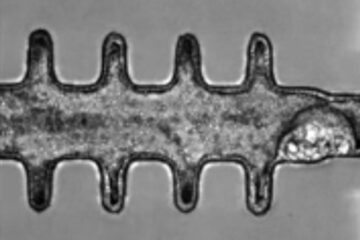New CSIRO soybean a hit in Japan

Bred by CSIRO from an old Japanese variety, the Bunya® soybean produces a suite of proteins that gel quickly and firmly – important characteristics for making a range of soy-based foods like tofu and custard.
“Thanks to its great flavour and gelling properties the Bunya soybean is highly sought after in Japan where soy-based foods are hugely popular,” says CSIRO Plant Industry scientist, Dr Andrew James.
“Bunya is particularly popular because it can be used to make edamame (a preparation of baby soybeans in the pod) and some types of miso (a traditional Japanese seasoning), as well as being great for making tofu.”
Bunya has become the preferred Australian soybean variety sold in Japan – and the preferred variety used by Australian tofu manufacturers – because it has a traditional Asian flavour and its large seeds produce higher yields of soy milk and custard.
Farmers that grow the Bunya soybean can also see benefits, such as its increased yields of better quality beans when grown in favourable conditions.
“Bunya plants are small which means they can be planted more densely than other soybean varieties,” Dr Andrews says.
“This, combined with the very large seeds they produce, increases Bunya yields compared to other soybeans.”
Bunya also has a trait from tropical soybean varieties which enables it to extend its juvenile phase making it more suited to a wider range of growing environments than other soybean varieties.
Bunya was selected and released via the National Soybean Breeding Program funded by the Grains Research and Development Corporation.
Media Contact
More Information:
http://www.csiro.auAll latest news from the category: Agricultural and Forestry Science
Newest articles

Solving the riddle of the sphingolipids in coronary artery disease
Weill Cornell Medicine investigators have uncovered a way to unleash in blood vessels the protective effects of a type of fat-related molecule known as a sphingolipid, suggesting a promising new…

Rocks with the oldest evidence yet of Earth’s magnetic field
The 3.7 billion-year-old rocks may extend the magnetic field’s age by 200 million years. Geologists at MIT and Oxford University have uncovered ancient rocks in Greenland that bear the oldest…

Mini-colons revolutionize colorectal cancer research
As our battle against cancer rages on, the quest for more sophisticated and realistic models to study tumor development has never been more critical. Until now, research has relied on…





















